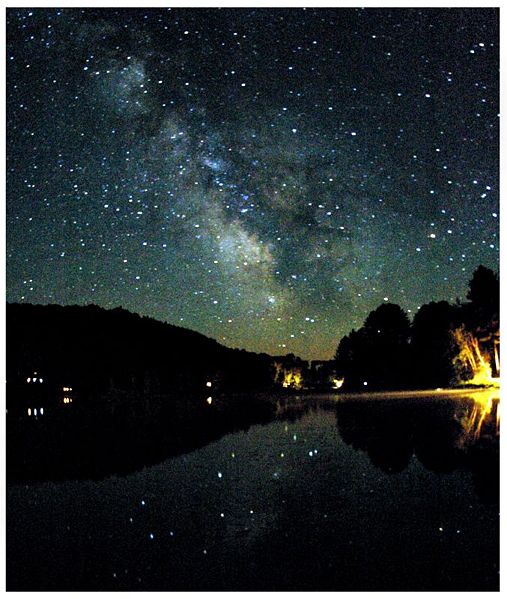The National Astronomy Meeting 2012
Interview with
Ben - NAM is the annual meeting of the Royal Astronomical Society. Although this year was a little bit special because it was in partnership with the German Astronomical Society, the Astronomische Gesellschaft. It's sponsored by the STFC and also the University of Manchester as this year's event was held in Manchester University. There were nearly 1,000 delegates, hundreds and hundreds of presentations, exciting public events, plenaries, and some fun social events as well.
Chris - Now off course, you make
Naked Astronomy which is our podcast that Dominic also appears on so I presume this is going to turn into an episode of Naked Astronomy. But without giving the game away too much, what were the top stories that you saw this week?
 Ben - Well, the one that seems to have really gathered the most coverage is an image that's been called the "billion stars photograph" even though there are actually far more than a billion stars in it. It's a photograph of the Milky Way put together by people at the University of Edinburgh from images taken by two different infrared telescopes. There's the UK infrared telescope in Hawaii, and Vista which is in Chile. All in all, it comes to 150 gigapixels. If you think that your digital camera might be 10 megapixels, that's 1500 photos tiled next to each other. They worked out that if you were to print it out, it would be about 200 metres wide. So it's a huge image and it's an image of our Milky Way.
Ben - Well, the one that seems to have really gathered the most coverage is an image that's been called the "billion stars photograph" even though there are actually far more than a billion stars in it. It's a photograph of the Milky Way put together by people at the University of Edinburgh from images taken by two different infrared telescopes. There's the UK infrared telescope in Hawaii, and Vista which is in Chile. All in all, it comes to 150 gigapixels. If you think that your digital camera might be 10 megapixels, that's 1500 photos tiled next to each other. They worked out that if you were to print it out, it would be about 200 metres wide. So it's a huge image and it's an image of our Milky Way.
Chris - Nice, but why is it important?
Ben - Well, it's very useful for testing algorithms that are designed for spotting interesting or unusual objects and it's part of something called the Vista Data Flow System. The idea is that we use this to calibrate new telescopes and essentially to archive astronomical data so people can easily use that image to give us an idea of what is actually there at a given time in the Milky Way.
Chris - Meteors?
Ben - It's also been found that Jupiter and the resonant orbits between Jupiter and Haley's Comet are responsible for when we get spectacular meteor showers which are known as meteor outbursts. There was one of these back in 1993, another in 2006, and now, researchers at Armagh Observatory in Northern Ireland think that this is because of the gravitational impact of Jupiter which slightly restricts the orbit so that you get a bunching up of the stuff that falls out of Haley's Comet. When we then go through that bit of the tail in Earth's orbit, we get this spectacular meteor shower.
Chris - But we've got to live another - I don't know- 70 years, 60 years to see it, haven't we now?
Ben - Well, the next one is going to be in 2070, yes, but they do argue that there's still an awful lot of good science that we can do between now and then.
Chris - Terrific! And finish this up by telling us about the dark energy material they presented.
Ben - Well this is based on the Sloan Digital Sky Survey 3 (SDSS-3) and using a survey called BOSS - that's Baryon Oscillation Spectroscopic Survey. What they've done is looked at over 250,000 galaxies and essentially done a statistical analysis where you can see how they clump together, and the clumping together can give you some idea of the waves that formed in the very, very early universe before atoms even condensed out of the incredibly hot plasma.
These waves got "fixed" in place so if we look at these waves at different times, we can look at the expansion of the universe by looking at the size of those wavelengths. Researchers working on BOSS have worked out that dark energy, this incredible force that is driving the expansion of the universe to get faster and faster, seems to have taken over somewhere between 5.5 and 6.5 billion years ago. Before that, the dominant force in the universe was gravity holding everything together and after that, it's been dark energy that's been causing the universe to expand. That won a Nobel Prize when it was first discovered. So now, working out what it is that's doing it is a big question in astronomy.










Comments
Add a comment